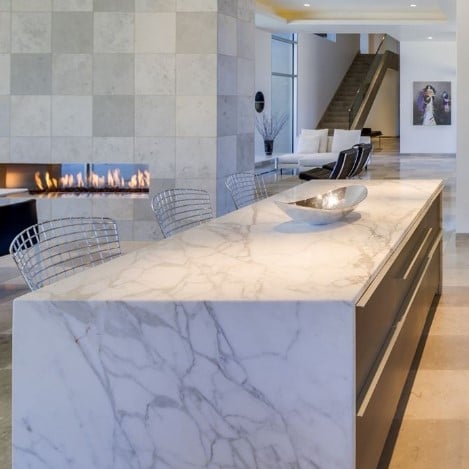
Marble is a timeless natural stone that makes a beautiful, classic choice for countertops, bathroom tile and more. If you’re considering marble for your next home remodel or upgrade, you might be wondering what this stunning natural stone is made of. Let’s find out more about marble, its origins, where it’s mined and more.
What minerals does marble contain?
Marble is a type of metamorphic rock, which is formed when limestone is altered by intense pressure and heat within the earth. The varied colors and distinctive veins in marble come from layers of different minerals and impurities that crystallize together. These minerals include:
- Calcite or dolomite
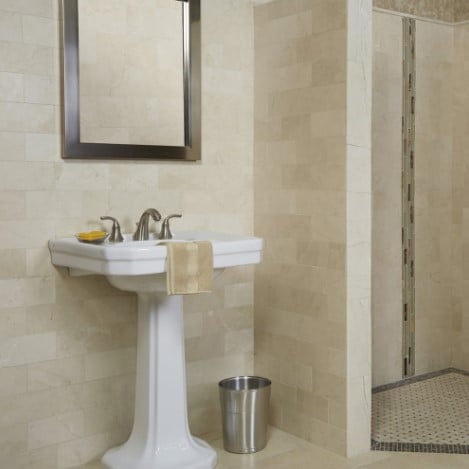
- Silt and sand
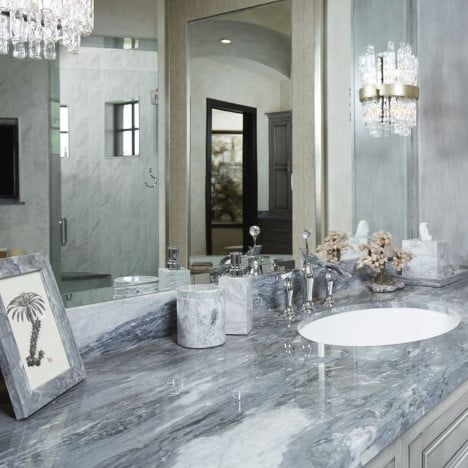
- Pyrite
- Feldspar
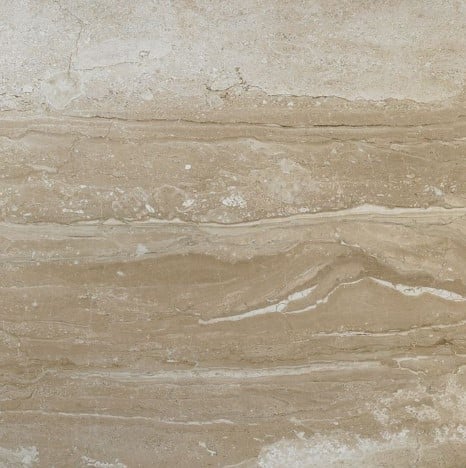
- Iron oxide
- Magnesium and serpentine
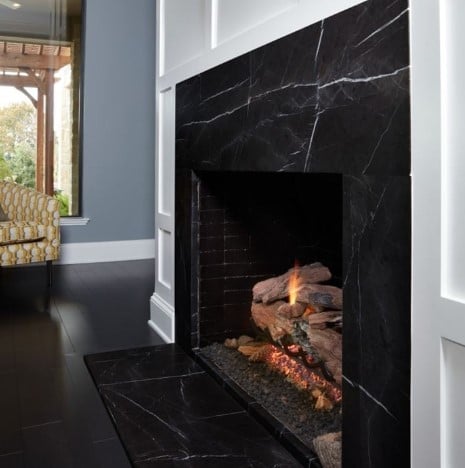
Together, these minerals give marble its range of colors, from pure white to rich black and many hues and undertones in between, including cream, tan, brown, gold, reds, blues and green. The layers of sediment are what lead to the gorgeous range of veining and patterns in the resulting marble, from delicate swirls to sweeping, dramatic or bold veins that give the stone its distinctive style and personality. The beauty of marble, as with any natural stone, is that each individual slab is one-of-a-kind.
How is marble mined?
Most of the world’s marble is mined in Italy, China, India and Spain, but it is also found in other places around the world. Italy is the producer of some of the most popular and classic types of marble, including Carrara marble and Calacatta marble.
Marble is mined carefully from huge quarries. Machines are used to cut grooves into the stone, from which massive blocks of marble are split from the rock face. A single marble block can weigh around 20,000 pounds. After extraction, special diamond-tipped blades are used to process the stone into manageable slabs about 7-9 feet long. When necessary, a resin is applied to any cracks or pits in the surface of the stone, and it is then polished to highlight the marble’s beauty.
Where can marble be used in the home?
Marble continues to be one of the most popular choices for classic, luxurious countertops in kitchens and bathrooms. Marble tiles can also be installed to create beautiful floors, shower walls and more.
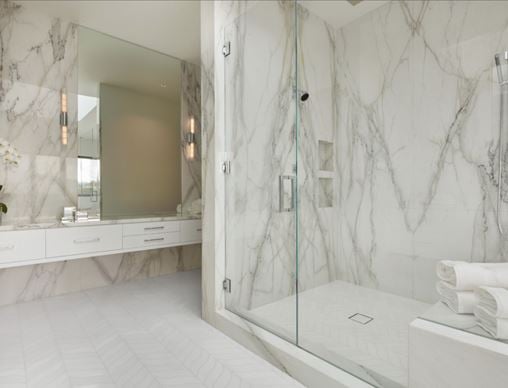
As a natural stone, it is quite hard and durable, but softer than granite or quartzite. Marble can be scratched or etched by acidic products, so it’s important to keep it protected with a proper sealant and always clean up spills right away. With careful maintenance and due attention, your stunning marble countertops or tiles will retain their looks for many years to come.
To see what a room in your home would look like with new marble stone, have a look at our Just Imagine Visualizer.





